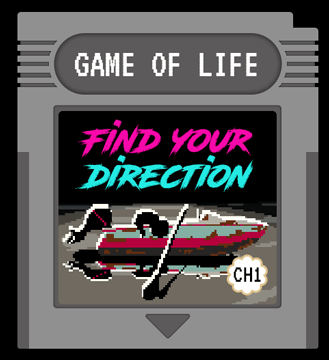Ever since we were young, we have heard the strategies that are supposed to make us rich:
Get a good education, work hard, save up, keep a close eye on your spending and you can retire a rich man.
But what if you don’t want to wait until your 70s to live your life wealthily? You are still young and vital now, so you’d rather have more free time now. How can you get wealthy without working five days a week? Luckily, there is another path to life you can take.
This article discusses the key points of MJ DeMarco’s book The Millionaire Fastlane.
There are three road maps to life:
- The Slowlane (which leads to mediocrity)
- The Sidewalk (which leads to poorness)
- The Fastlane (which leads to wealth)

The Slowlane
The Slowlane revolves around the idea of sacrificing today for a better tomorrow. It is the most commonly followed path to life found in society.
It is the traditional path; the path that your parents likely suggested you to go.
“Go to school, get a good job, buy a used car, keep a close eye on your spending, quit drinking expensive Starbucks caramel macchiatos, buy cheap imitation Nespresso cups, eat out only once a month, save money. Do this, and you can retire rich when you’re 65 or 67, or whatever the retirement age will be by then.”
The Slowlane is a stable path for the future, and you can envision how your life will be with a level of certainty.
But it is also a life of mediocrity.
You will be able to buy a decent family car, but it will never be that Ferrari Testarossa you were dreaming of. You can go on summer holidays, but maybe not take your entire family to Hawaii. Your mansion becomes an apartment. Your yacht becomes a dinghy.
Throughout your working life you’ll make tolerable sacrifices, because you know you will have all the freedom in the world when you retire.
The ingrained 5-for-2 mentality
The Slowlane consists of a series of doctrines that continuously ask you to make a trade-off. You can have something nice, if you are willing to give up something else. The mindset of the Slowlane is characterized by risk-aversion and incremental improvements.
Some ingrained ideas:
- Time is abundant and can be gladly traded for money.
- Education is important as it helps to earn more.
- Money is scarce, so every dollar must be accounted for.
- Work now for a comfortable retirement.
- Settle for less to save a little bit more.
- Debt is evil and needs to be avoided.
You sell your time Monday through Friday working a soulless job, to get time off in the weekend. The 5-for-2 ratio is so deeply ingrained in our minds that we don’t even question it anymore.
How to get rich in the Slowlane
Getting rich the slow way requires a long life of employment. It means you will work close to full-time until your retirement age.
Within the Slowlane, you can try to outperform your colleagues. You can work your ass off, put in 50 hours when they only put in 40. You can strive for every promotion, switch to better jobs at different companies every now and then. It may get you a better house, better car and possibly even a better wife.
But this is a taxing life in which your family, friends and hobbies play a subordinate role. Your kids want to grow up with their dad.
The Slowlane can lead to a relatively wealthy lifestyle, but you pay the price with a long working-life. You will be off-the-hook when you’re in your 70s, but you don’t know in what shape.
At least this kind of career planning is better than having no plan at all…

The Sidewalk
People taking the Sidewalk path only think about today rather than the future.
They spend all the money they make on things that give instant gratification. Think of pleasure, consumables, gadgets, fashion, trips, shiny things and entertainment. As a result, they live from paycheck to paycheck, and when they are short at the end of the month, they take out credit.
The Sidewalker mindset:
- Life is too short to plan ahead.
- Don’t worry about time, you could be dead in two weeks anyway.
- Education is done as soon as you graduate.
- Debt is alright, credit allows you to buy things now.
- If you have money, flaunt it and spend it.
When someone on the Sidewalk gets in trouble, he or she usually tries to externalize responsibility. He indulges in the victim mentality, because “things are not in his control”.
The Sidewalk will never make you rich. Even people with a high income can live on the Sidewalk. Think of artists who became famous overnight, but went bankrupt a few years later after they spent all of their money. They didn’t know how to invest their money.

The Fastlane
The Millionaire Fastlane is a business-oriented lifestyle with the optimal environment for rapid wealth creation.
To get on the Fastlane, you need an asset with an unlimited leverage. This can be a business, property, investment, machine or a piece of software. There needs to be a disconnect between your input (your time spent) and the output (money earned).
People in the Fastlane understand that they will not get rich renting out their time. You need to build something that people want to pay for. Your goal is passive income.
You need to build a money-generating business that would give you an income even if you decide to spend a month on a holiday / in the jungle / on the moon. You want to be able to earn money while you sleep.
Examples of Fastlane wealth generation:
- A songwriter who gets paid every time his song is played on the radio
- A writer who earns royalties for every book that is published
- An app developer that sells his to-do-list app in the App Store
- A YouTuber that displays ads in his videos
- A house that you can rent out on AirBnB
You need to stop consuming and start creating!
How to switch to the Fastlane
The mindset you need to adopt:
- Life is a process.
The decision to go on the Fastlane is not a single event, but a series of hundreds of small choices. Small changes in your daily habits and lifestyle can lead to a big impact in the long run. “What would someone in the Fastlane do?” - Extreme people get extreme results.
If you want extraordinary results, you need to be extraordinary yourself. Build a unique character so that opportunity finds you. - Your business needs to solve needs and provide value.
Don’t put your own needs first, but think what problems you can solve for others. Benefit the society as a whole, and you will benefit in the process. - Wealth is not a zero-sum game.
Your earnings does not mean that someone else has to lose. - Continually educate yourself.
Don’t stop after graduation. Read books, learn new skills, deep dive in other disciplines. Your knowledge is most likely to be the deciding factor in your success. - People will discourage you.
The more you deviate from the common path, the more you will need to fight off opinions from other people. Don’t expect friends or family to give you good advice. Find new people with similar convictions, motivate each other and offer each other opportunities. - Money is abundant, time is precious.
Be frugal with your time, instead of frugal with your money. Debt can be useful if it allows you to grow your system.
“If you don’t find a way to make money while you sleep, you will work until you die.”
~ Warren Buffett
How does life in the Fastlane look like?
The Fastlane buys you freedom.
It is not simply about being able to buy a nice car or go on a cruise to the Caribbean. It is about not having to grind away hours working a soulless job that doesn’t fulfill you. It is about being able to take off for a couple months whenever you feel you need to. It is about being able to be there when your wife gives birth and spend the first months together with your newborn.
Look at the Forbes 500 list of the richest people in the world. It is no wonder that all of them are entrepreneurs that built their own businesses. They chose the Fastlane. They would never be on that list following the Slowlane.
What is Passive Income?
Passive income is the opposite of active income. Active income is when you earn money in exchange for effort. You either get a salary, a per-hour paycheck, or work for commisions or tips. This includes the majority of full-time and part-time jobs.
However, with passive income, your effort and pay are not linked. So you cannot realistically calculate a wage per hour, because there is no direct link between time and earning.
A Real-Life Example of Passive Income
Meet Joe.
He’s far from average when it comes to painting. In his job as a professor at a liberal arts university, he teaches students how to use Photoshop to create illustrations.
In terms of salary, he has nothing to complain about. He earns about $4,000 a month, for his 40 hour work week, resulting in a $25 hourly wage. He works from Mondays to Fridays and plans his time well, so he has the weekends off.
Last month his school was closed, so he had to give some online classes. It was a little awkward at first, but now it’s going quite well. And that gave him an idea: What if I would record some tutorials about the basics of Photoshop and sell them online? It could easily be a small course that he could sell for $40.
He decides to give it a try.
The camera rolls for ten hours and he spends ten hours editing the video and putting it online. Twenty hours of work without seeing a single dollar, this better be worth it.

A week goes by without a single sale.
He makes a few adjustments to the title and thumbnail of the course.
It paid off. On February 8, he finally gets his first sale!
The number of sales slowly increases throughout, and Joe sells to 80 customers. He spends a few hours here and there to fix some mistakes in his course, but overall, Joe feels like his course has been a great success!

The graph below shows the difference between Joe’s teaching at university (active income) and online teaching (passive income).
At his university job, he basically earned $1,000 each week. There is a direct connection between his hours spent in class and the money he earns. You can tell, because the line that represents his active income is almost linear.
In March, Joe will get another paycheck of $4,000. And in April, he will again earn $4,000.

His online course however, only started to sell from the second week onwards. The number of courses he’s selling is steadily increasing, but his earnings are far from constant. There is no direct relation between the time he spent on his course and its revenue.
In February, he earned less than his job as a professor, but given the upward trend of his passive income, he will likely earn more in March. If he’d want, he could just lay back in March and see the money come rolling in.
But Joe has an even better idea. His plan is to make a second course and sell it next to his first course.
The Basics of Passive Income
by FreshSaga
Passive Income is disconnecting your time and the money you earn. It is the only way to true financial freedom. You can find examples of passive income in real estate, investing, online teaching, and more…






3 Comments